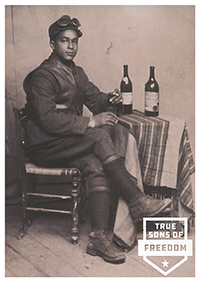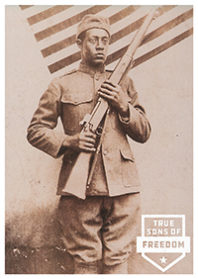

Havey Bratton was an African-American World War I serviceman from the Eastern Shore of Virginia. He is one of four Eastern Shore solders featured in a temporary exhibit at the Barrier Islands Center on loan from the Library of Virginia. The exhibit is on display in the former African American Almshouse, which is now used as an education building, and can be seen anytime the museum is open.
Submitted Article
The Barrier Islands Center in Machipongo is hosting a temporary exhibit on loan from the Library of Virginia, “True Sons of Freedom.”
To commemorate World War I, “True Sons of Freedom” uses photographs of African-American soldiers from Virginia who fought overseas to defend freedoms they were denied at home. African-Americans from all parts of the Commonwealth served in the army and navy during World War I. The soldiers highlighted in “True Sons of Freedom” came from locations across Virginia and most worked as farmers or laborers before the conflict.
Reflecting the pride and determination of African-American World War I servicemen, the images were submitted by these veterans with their responses to military service questionnaires created by the Virginia War History Commission as part of an effort to capture the scope of Virginians’ participation in the Great War. The series of questions about the veterans’ experiences provides invaluable genealogical information about the soldiers, their families, and their service records.
World War I recruitment efforts aimed at African-Americans brought new soldiers into the armed services, providing them with opportunities to travel, to work, and, in many cases for the first time, to face cameras—all outside the restrictions of the Jim Crow South. These pocket-size portraits, made outdoors or in makeshift studios, became mementos for families and sweethearts. More importantly, these photographs challenge the crude and demoralizing cultural products of an era that often reduced African-Americans to stereotypes and denied them full participation as citizens of the United States. They posed in uniform, some in casual stances, others with a rifle to show their combat readiness. Here were African-Americans presented as they wanted themselves seen.
The exhibition is on display in the former African-American Almshouse, which now serves as the Education and Community Building and is available for viewing anytime the museum is open.


